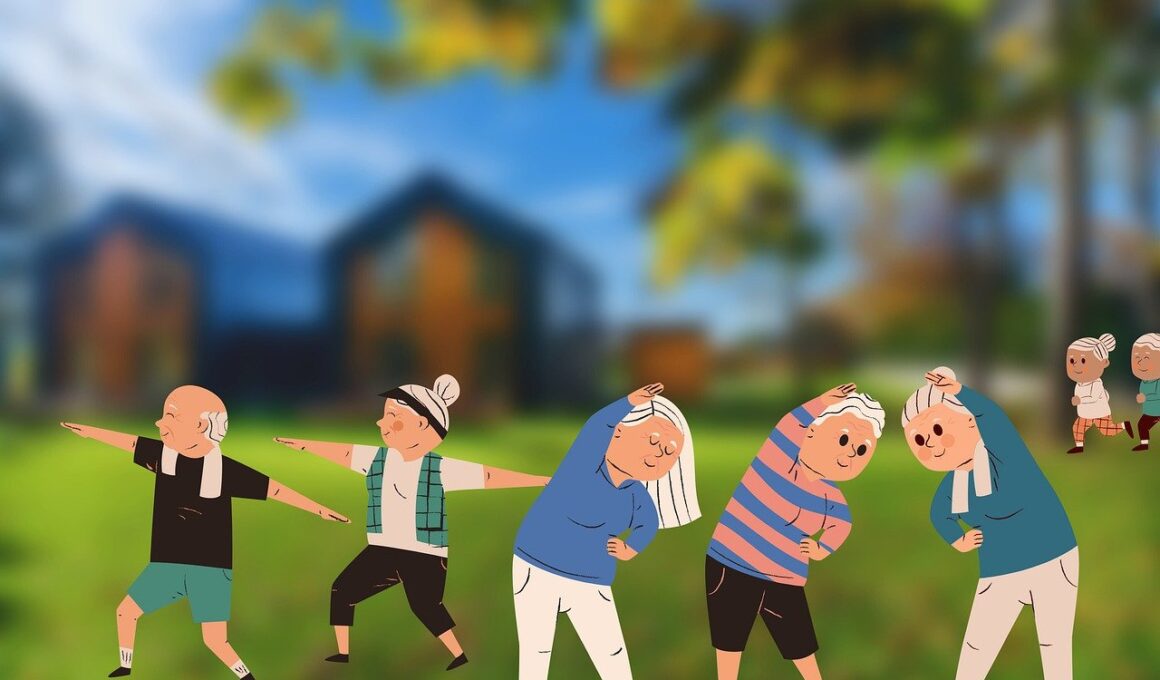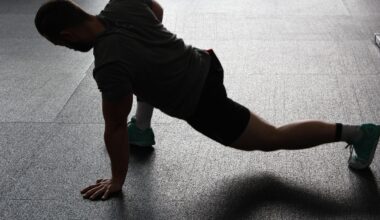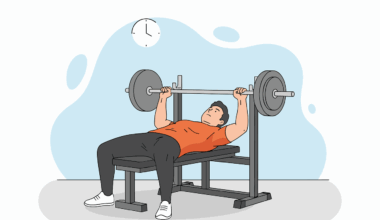Group Fitness for Aging Adults: Preventing Falls and Injuries
As we age, maintaining our physical health becomes increasingly important. Group fitness classes tailored for older adults can play a significant role in enhancing mobility, strength, and overall well-being. These classes are designed with the safety and capabilities of seniors in mind, allowing for a supportive environment where participants can thrive. Engaging in regular physical activity helps to improve balance, coordination, and flexibility, which reduces the risk of falls, a common concern for aging adults. Furthermore, group classes foster social interaction, helping participants build friendships and encouraging them to remain active. This social aspect of fitness is crucial as loneliness can often affect health negatively. The variety of exercises available in these classes can also cater to different fitness levels, ensuring that everyone can find a suitable option. Ultimately, incorporating group fitness into the lives of aging adults can lead to numerous benefits, both physically and mentally. As a result, many seniors find themselves more capable, confident, and connected to their communities, significantly improving their quality of life.
One key focus of group fitness classes for aging adults is strength training. Strengthening muscles is vital for improving physical stability and reducing the risk of falls. Instructors often incorporate resistance bands, light weights, and bodyweight exercises into the routines. These tools provide the necessary resistance without overwhelming participants. Through consistent participation, seniors can enhance their muscular endurance and decrease the likelihood of injury in daily activities. Balance exercises are another essential component of these classes. Such exercises target crucial muscle groups that support stability, enabling individuals to maintain a more upright posture. This process helps prevent falls, a leading cause of injury among older adults. Additionally, instructors may incorporate core stability training, which can significantly benefit aging adults by improving posture and enhancing mobility. Overall, strength and balance routines provide a comprehensive approach to fitness that helps reduce risks associated with aging. By focusing on such exercises, group fitness classes aim to empower seniors, encouraging them to embrace more active lifestyles and participate in various activities they may have previously avoided due to fear of injury.
The Role of Flexibility and Mobility
Flexibility and mobility are critical aspects of fitness for aging adults that are often overlooked. Group fitness classes prioritize stretching exercises to enhance muscle flexibility and joint range of motion. Improved flexibility can greatly affect seniors’ daily lives, making it easier for them to perform basic tasks such as bending, reaching, or even walking. Instructors typically emphasize gentle stretching routines that promote relaxation while safely enhancing mobility. These exercises are designed to be low-impact, making them accessible for those with limited mobility. Regular participation in these sessions can result in significant improvements over time, enabling participants to engage in more activities without discomfort. Additionally, stretching can help alleviate tension and pain in muscles and joints, contributing to overall comfort. Mobility exercises, including tai chi and yoga, incorporate fluid movements that enhance balance and develop core strength. Such practices not only improve physical stability but also provide mental benefits, helping individuals to feel more grounded and less anxious about their capabilities. Embracing flexibility training as part of group fitness supports holistic health and fosters a proactive approach to aging.
The social aspect of group fitness classes cannot be understated when discussing their benefits. Joining these classes allows aging adults to connect with peers, fostering friendships and a sense of belonging. This camaraderie encourages individuals to commit to regularly attending, making fitness a shared experience rather than a solitary activity. The supportive environment created by group participation can motivate seniors to push their boundaries and try new exercises they might avoid when alone. Additionally, social interactions within these classes can combat feelings of loneliness and isolation that many aging adults experience. By engaging with others, participants can share their experiences and challenges, leading to increased emotional well-being. Furthermore, instructors often cultivate a friendly atmosphere that welcomes any skill level, reinforcing participants’ confidence in their abilities. Beyond the physical benefits of participating, the mental health improvements linked to social engagements in fitness contexts are profound. Group classes can serve as community hubs where lifelong friendships develop, providing a network of support that is crucial as people age. Ultimately, the combination of physical activity and social interaction contributes to a significantly enhanced quality of life for older adults.
Tailoring Classes for Different Abilities
Group fitness classes for aging adults are designed to accommodate various abilities and health conditions. This inclusivity is essential as it ensures that everyone can participate and benefit from the sessions. Instructors are trained to modify exercises as necessary, offering alternatives that cater to those with limitations. For example, if any participant has difficulty with a particular movement, instructors can provide adjusted versions that still deliver similar benefits without compromising safety. Such adaptations can make fitness accessible to those with arthritis, joint issues, or other health concerns. Additionally, classes may be structured in levels, allowing seniors to select the appropriate level of intensity and challenge for their personal fitness journey. This personalized approach fosters individual growth and achievement. Another key aspect is incorporating gradual progressions within the classes, ensuring participants build strength and confidence over time. By carefully planning these classes and considering the differing capabilities of aging adults, instructors promote safe and effective exercises that empower individuals. This framework encourages long-term commitment to fitness, leading to sustained health improvements for seniors.
Safety remains a primary concern in group fitness for aging adults. Proper assessment of participants is critical prior to beginning a program. Instructors should assess health histories and physical capabilities, enabling them to create safe workout environments. Additionally, it is beneficial for groups to be small, allowing instructors to give adequate attention and support to each participant. A structured warm-up and cool-down routine is essential to prevent injury and to prepare the body for physical activity. Instructors should emphasize correct techniques throughout sessions, teaching participants how to perform exercises safely. Furthermore, promoting hydration and awareness of personal limits is vital in preventing accidents during workouts. Regular communication with participants about their comfort levels and any modifications is crucial in addressing individual needs. These proactive measures ensure that safety is paramount and that all participants feel secure while engaging in fitness activities. Additionally, word-of-mouth has shown strong results in encouraging more seniors to join group fitness classes. Therefore, a culture of safety not only enhances participant experience but can also significantly increase class attendance, fostering a healthier community overall.
Encouraging Longevity through Fitness
The importance of group fitness for aging adults extends far beyond immediate health benefits. Regular participation in these classes promotes longevity, equipping individuals with healthier lifestyles that lead to better quality of life. Research has shown that physically active older adults experience reduced risks of chronic diseases, improved cognitive function, and enhanced emotional well-being. Group fitness additionally encourages a positive relationship with physical activity, making it less intimidating and more enjoyable. When seniors find joy in movement, they are more likely to make fitness a consistent part of their routines. Many programs also offer educational components on fitness and nutrition, further empowering participants to make informed health choices. This holistic approach is instrumental in equipping older adults with knowledge about maintaining overall wellness. Encouraging aging adults to set fitness goals is another vital aspect, providing a clear path towards increased motivation and achievement. This process fosters a sense of accomplishment, contributing to self-esteem and overall happiness. Therefore, through group fitness, seniors develop lifelong habits that promote a long, healthy, and fulfilling life.
In conclusion, group fitness classes play a pivotal role in enhancing the health and well-being of aging adults. By focusing on strength, balance, flexibility, and social engagement, these classes create a supportive environment tailored for the unique needs of older individuals. The various benefits they offer extend beyond the physical aspects, enriching the mental and emotional health of participants as well. Safety and inclusivity are at the forefront of these programs, ensuring that everyone can participate comfortably and confidently. With well-trained instructors guiding participants through classes, individuals feel empowered to push their boundaries and grow in their fitness journeys. Additionally, fostering a sense of community promotes lasting friendships and social connections that are crucial for overall happiness. By embracing a holistic approach to fitness, group classes encourage healthier lifestyles among aging adults. Ultimately, this leads to a better quality of life, allowing individuals to enjoy more active years. The impact of these programs goes beyond fitness, tackling loneliness and promoting overall well-being. Thus, group fitness classes are invaluable resources for senior health promotion and are essential for improving the lives and longevity of aging adults.


